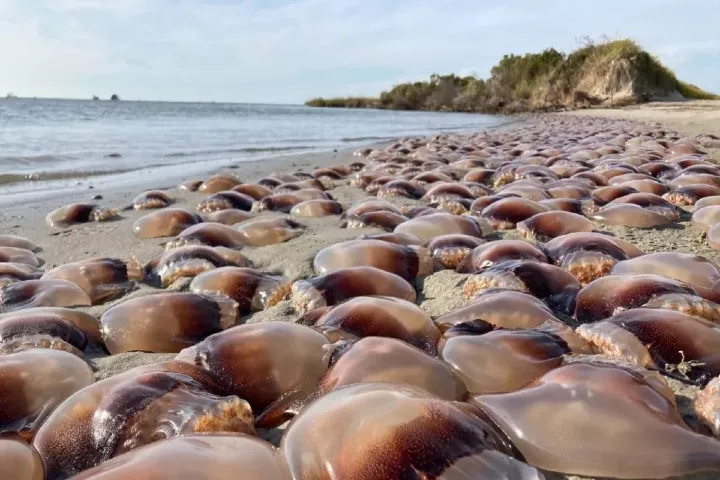The gathering of a large number of creatures from any species is an amazing spectacle. That is what happened in the United States where globular cannonball jellyfish also known as Stomolophus meleagris numbering in thousands washed ashore along the coastline in North Carolina as per a report in livescience.com.
Given the number of these creatures, the scenario was christened as a “jellyfish jamboree”.
The Cape Hatteras National Seashore Park rangers who belong to the National Park Service clicked pictures of this grand spectacle on October 14 and shared it on a Facebook post.
It was on the northern edge of Ocracoke Island this “large swarm” had washed up to. This island is part of the Outer Banks.
The reason for this rush of these creatures which are squishy and stinger-less is the appearance of a species of saltwater fish which is called red drum or Sciaenops ocellatus during its spawning season. The larvae of this fish happen to be the favourite food that is relished by the jellyfish.
In its shape and size these jellyfish look just like actual cannonballs. They weigh 450 grams on average and their diameter is 10 inches. According to the Georgia Department of Natural Resources this particular variety of jellyfish is one of the most common types found along the south eastern coast.
The post explaining as to why these creatures washed up said: “Jellyfish rely on winds and currents to help them swim. Colder water temperatures, winds and currents can all play a role in them washing ashore.”
An article in Newsweek observed that it was a pleasant coincidence this year as the spawning event of the red drum in tandem with the colder water temperatures resulted in a large quantity of seafood being made available for these jellyfish who are known to be voracious eaters.
Commenting on this event in the Newsweek, Cheryl Lewis Ames, who is an Associate Professor of Applied Marine Biology at the Graduate School of Agricultural Science in Japan’s Tohoku University said: “Why blooms occur in some years and not in others, or why sometimes blooms are larger in some years compared to others is all tied to environmental factors, but not well understood. In my several decades of jellyfish research I have found that few jellyfish species will reliably show up just when you expect them.”




















